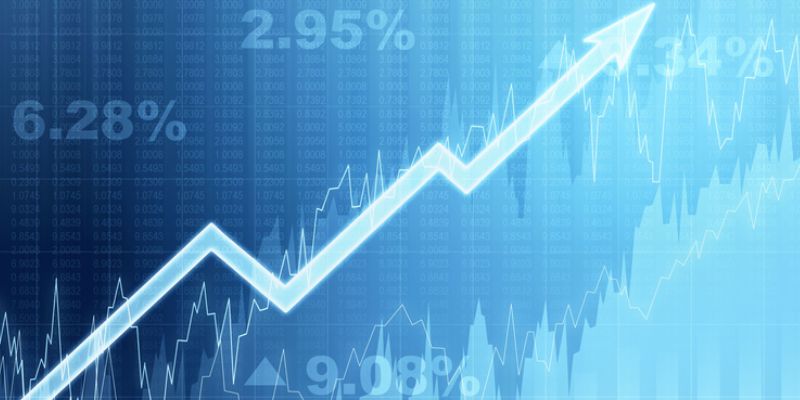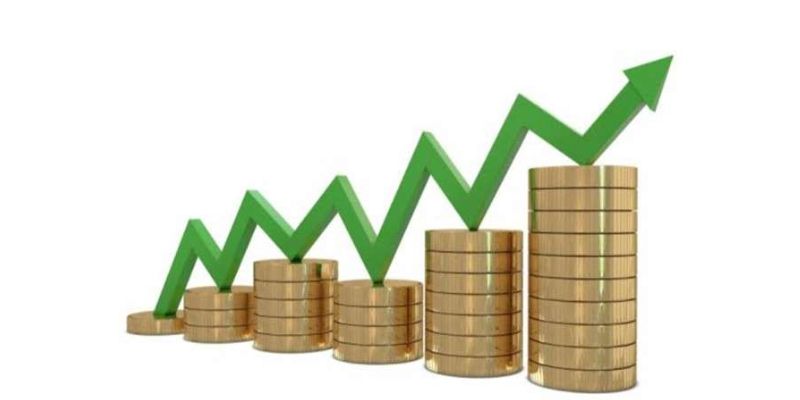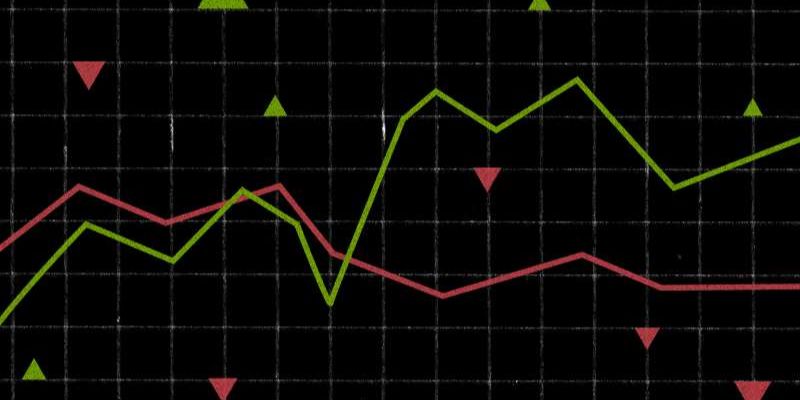Central bank interest rates news just hit, and your wallet feels it. I’ll show you how. The recent spike in rates isn’t just noise on Wall Street; it’s a signal that could mean more dollars out of your pocket. Think loans, credit cards, even your savings—every piece of your financial pie gets a shake-up when the Federal Reserve makes a move. And they’ve been moving alright. Ever stared at your bank statement and wondered why the numbers jiggle? Let’s decode the Fed’s latest policy updates, why they matter to your money, and what you can do to stay ahead. No jargon, no fluff—just the essentials to keep your finances on track. Ready to dig in? Your wallet will thank you.
Understanding the Impact of Federal Reserve Policy Updates on Your Finances
Analyzing the Recent Interest Rate Announcements
When the Federal Reserve hikes rates, it costs more to borrow money. From credit cards to home loans, your payments may go up. Higher rates can slow down expensive buys like houses or cars. This is because loans for these big-ticket items become more costly.
The Fed does this to control inflation. That’s when the price of almost everything you buy goes up. By upping rates, the Fed aims to make people spend less. This, they hope, will slow price hikes. The Fed keeps an eye on the economy and will cut rates if things get too slow.
The Implications of Emergency Rate Cuts and Monetary Policy Changes
Sometimes, the economy needs a quick boost. This is where emergency rate cuts come in. The Fed chops rates in a snap to make borrowing cheap. This makes it easier for people and businesses to get loans. It encourages them to spend and invest, which can wake up a sleepy economy.
Monetary policy changes can include more than just rate changes. The Fed might buy or sell government bonds to adjust how much money is in the system. When it buys lots of bonds, there’s more cash floating around. This can make loans cheaper and easier to get, too.
Keep track of Fed updates. They guide how much it costs for you to borrow. They also affect how much you earn on your savings.
Understanding fed policy can help you plan your money moves better. You’ll know if it’s a good time to buy a home or just focus on saving more. Regular updates can make a big change in your finances. So it’s smart to keep up.

Exploring Central Banking Decisions and Their Economic Ripple Effects
Deciphering Inflation Targeting and its Role in Bank Rate Trends
Central banks often aim for a certain level of inflation. This goal is inflation targeting. They use inflation targeting to keep prices stable. When prices rise too fast, life gets costly for you. So, central banks may lift interest rates to cool things down.
Higher interest rates mean borrowing costs more. If you have loans or credit cards, the interest you pay can jump up. This hit to your pocket can make you think twice before spending. As people buy less, demand drops and so can prices, leading to the stability central banks want.
Examining the Quantitative Easing Impact and Repo Rate Movements
Sometimes the economy needs a boost. Central banks then buy lots of assets to pump money into the economy. This push is called quantitative easing. It can help lower interest rates and cheer up investment and spending.
Lower rates from quantitative easing can make it cheaper to get loans. This can mean less pinch on your wallet when buying a car or a house. Yet, if the central bank buys too much, there may be too much money chasing too few goods. This can fire up inflation, eating away your buying power.
Repo rates are like a signpost for money’s cost. This rate affects how banks lend to each other overnight. Changes here can flow through to the rates you see on mortgages and savings. When the repo rate moves up, your loan gets more expensive. When it dips, you may see some relief in loan rates.
Next time a central bank moves rates or buys assets, know your money will feel it. It’s all part of how they help steer the economy. Keep an eye on these moves, and plan ahead to keep your wallet happy!

Navigating the Immediate and Long-Term Financial Market Reaction
The Influence of Central Bank Governors’ Statements on Markets
When central bank leaders speak, markets listen. They set the mood. Their words can cause stocks to rise or fall. Think of it like weather forecasts. But here, it’s about money, not rain or sun. A central bank governor saying rates might go up can scare investors. Stocks might drop. They fear loans will cost more, slowing down business growth.
Evaluating Credit Conditions and Consumer Borrowing Costs Amidst Rate Shifts
Higher interest rates make loans pricier. That’s for cars, houses, and even credit cards. When central banks hike rates, your wallet feels it. Loans get more expensive. People spend less. Card debts cost more. It’s like a tight shoe that suddenly squeezes. High rates aim to cool off spending and slow price hikes.
But there’s more to the story. Let’s dive in.
The Influence of Central Bank Governors’ Statements on Markets
A central bank governor’s outlook matters. They lead our banks. They steer the services that hold and move our money. They watch prices and try to keep them steady. When they hint at new plans, banks and investors make moves. They’ll buy safer things, like government bonds, if risk seems high. Or they might go bold, taking a gamble on stocks if they bet on a strong economy.
One sentence from them can zigzag through markets. If they sound tough on inflation (that’s a hawkish take), people think, “Okay, high rates are here to stay.” If they go soft, suggesting they’ll keep the cash flowing (that’s a dovish view), folks relax. Markets might light up, hopeful for easier money.
Evaluating Credit Conditions and Consumer Borrowing Costs Amidst Rate Shifts
Think of credit like water in a hose. If central banks tighten rates, the hose kinks. Less water flows. This means less cash to lend. You might find it harder to get a loan. If you do, it costs more. Each month, you’re giving more money to the bank. It’s not just you. Businesses also borrow. They feel the pinch and may slow down on hiring or expanding.
But why do central banks hike rates? To keep prices from soaring. Inflation nibbles away your buying power. If a banknote bought a burger last year but only half a burger this year, that’s inflation at work. Central banks try to control this. They want steady, not runaway, prices. So, when your costs go up, it’s part of a big plan to keep the economy on track.
The long game? It’s about balance. Central banks juggle. They aim for enough growth but also stable prices. They change rates, watching the economy’s rhythm. You feel it in your day-to-day budget. But it also aims to keep the bigger picture – our overall economy – healthy and moving right.

Demystifying the Global Economic Outlook Through International Lens
The Role of International Monetary Fund and World Bank Interest Forecasts
It’s no secret: central banks steer our economies. They are like captains of giant ships. When they move rates, each of us feels the ripple. Think of the International Monetary Fund (IMF) and World Bank as lookouts. Their job is to spot storms and sunshine in global money seas. They give forecasts, guesses about how money weather may change.
Where does this info come from? Every so often, the IMF and World Bank check on the economy’s health. They look at how much stuff we make and sell. They think about prices going up, called inflation. And they tell us what they see coming. Their forecasts are clues. They hint where rates might head next.
Why should you care? Well, if the forecasts say “Watch out, a rate hike storm is coming!” then you know borrowing money will cost more soon. This can mean pricier loans for cars, homes, and college. If they say “All calm, with rates holding steady,” then no big waves are likely to hit your bank account right away.
Assessing the Effects of Currency Devaluation and Exchange Rate Fluctuations on Economic Health
Let’s talk about money travel. Not your vacation cash, but how money moves from one country to another. Currency devaluation is like when your money shrinks on a trip abroad. If your home currency falls in value, stuff you buy from other countries costs more. This can be rough for your budget if you like imported goods.
Exchange rates can bob up and down like boats on the sea. Central banks watch these waves closely. A strong currency makes exports cost more for other countries to buy. A weak one makes everything you import costlier. These changes shake up our financial health. They can make things cheaper or pricier in stores and online.
It’s not just about shopping, though. These swings touch many parts of our economies. They change how much your savings are worth. They alter how much it costs factories to make things. And yes, they sway what you’ll pay on loans. Central banks can use rates to try and keep these money tides calm. This helps keep our economic ship steady.
In both cases, the IMF and World Bank forecasts act as an alert system. They help us get ready for what might come our way. As a central bank analyst, I keep my eyes on these forecasts. They guide me in predicting how policies might shift. This helps us understand the financial world. And that understanding is what you need to navigate the waters of global economics.
In this post, we dove deep into how the Fed’s choices shape your money matters. From recent rate changes to emergency cuts, we’ve seen how each action has a real effect on our wallets and the economy. We uncovered how inflation goals and big moves like quantitative easing touch everything from what we pay for a loan to how much cash we have on hand.
We also explored how words from big bank bosses can make markets jump or stumble and checked out how shifts in rates can change what it costs us to borrow money. Plus, we didn’t forget to look beyond our borders—seeing how global talks and money values can alter economic health.
To wrap up, this isn’t just about dry numbers or vague policy talk. It’s about your cash, your loans, and your future. Get a grip on this, and you’re on your way to smarter money moves. Trust me; I’m here to help you understand these complex bits so you can make the best decisions for your bank account.
Q&A :
Sure, here are some SEO-optimized FAQs based on the provided keyword “Central bank interest rates news”:
How do central bank interest rate decisions impact the economy?
The interest rate decisions made by central banks play a crucial role in managing a country’s economy. When central banks raise interest rates, it can lead to lower consumer borrowing and spending, which may reduce inflation but slow down economic growth. Conversely, lowering interest rates may encourage borrowing and investing but can risk higher inflation.
What are the latest updates on central bank interest rates?
Central bank interest rate news is dynamic and subject to frequent changes. For the most recent updates, individuals should refer to authoritative financial news sources or the official websites of central banks. These updates provide insights into economic policy shifts and forecasts that can affect various financial markets and the global economy.
How often do central banks review and adjust interest rates?
Most central banks have a set schedule for reviewing and potentially adjusting their benchmark interest rates. For example, the Federal Reserve in the United States typically meets eight times a year to discuss monetary policy, which includes interest rate decisions. These schedules can be found on the respective central bank’s official website.
Why are central bank interest rates important to investors?
Interest rates set by central banks influence the overall cost of borrowing and the return on savings, which directly affects investors’ decisions. Higher interest rates may make bonds and savings accounts more attractive, whereas lower rates might steer investors towards equities for potential higher returns. Therefore, investors closely monitor central bank rate announcements for portfolio strategy adjustments.
Can central bank interest rate changes affect currency value?
Yes, central bank interest rate changes can have a significant impact on currency value. Higher interest rates can increase the demand for a currency as investors seek to capitalize on better returns, leading to an appreciation of the currency. On the other hand, lower interest rates may decrease currency demand, potentially leading to depreciation.

